Download ROXY Potentiostat user manual, ed. 6
Transcript
Antec BV Industrieweg 12 2382 NV Zoeterwoude The Netherlands ROXY potentiostat User manual 210.0010, Edition 06, 2015 T +31 71 5813333 | F +31 71 5813334 | [email protected] | www.myantec.com Copyright ©2015, Antec, The Netherlands. Contents of this publication may not be reproduced in any form or by any means (including electronic storage and retrieval or translation into a foreign language) without prior agreement and written consent from the copyright of the owner. The information contained in this document is subject to change without notice. ROXY, ALEXYS, DECADE, DECADE II, DECADE Elite, INTRO, Flexcell, ReactorCell, SenCell, VT-03, µ-PrepCell, SynthesisCell, ISAAC, HyREF are trademarks of Antec. Whatman™ (word and device) and Whatrnan™ (word only) are trademarks of Whatman lnternational Ltd. SOLVENT IFD™ and AQUEOUS IFD™ are trademarks of Arbor Technologies, Inc. Clarity®, DataApex® are trademarks of DataApex Ltd. Microsoft® and Windows™ are trademarks of Microsoft Corporation. Excel is a registered trademark of the Microsoft Corporation. The software and the information provided herein is believed to be reliable. Antec shall not be liable for errors contained herein or for incidental or consequential damages in connection with the furnishing, performance, or use of software or this manual. All use of the software shall be entirely at the user’s own risk. Chapter 1 Table of contents 3 Declaration of conformity We Antec Leyden B.V., Zoeterwoude, The Netherlands, declare that the product ROXY™ Potentiostat type 210 to which this declaration relates, is in conformity with the following directives: Safety (2006/42/EC) Safety requirements for laboratory equipment IEC61010-1:2001 2nd ed. (Class I, Installation cat. II, Pollution degree 2) Particular requirements for laboratory equipment for the heating of materials IEC61010-2-010:2003 2nd ed. Immunity (2004/108/EC) Electromagnetic immunity EN61326-1:2006 EN61000-4-2, EN61000-4-3, ENV50204, EN61000-4-4, EN61000-4-5, EN61000-4-6, EN61000-4-8, EN61000-4-11 Emissions (2004/108/EC) Electromagnetic emission EN61326-1:2006 EN55011 (Class B), EN61000-3-2, EN61000-3-3 Attention Only use manufacturer-supplied cable(s) to connect with other devices. Part numbers 250.0122 (RS232 cable), 250.0130 (I/O cable) and 250.0128 (output cable). Thoroughly connect shielding to common. Manufacturer will not accept any liability for damage, direct or indirect, caused by connecting this instrument to devices which do not meet relevant safety standards. June 25, 2015 4 ROXY potentiostat user manual ed. 6 Intended use For research purposes only. While clinical applications may be shown, this instrument is not tested by the manufacturer to comply with the In Vitro Diagnostics Directive. WEEE directive Antec Leyden is a Business-to-Business producer of analytical analysis equipment which fall under WEEE Annex IA categories 8 and 9 (includes medical devices and monitoring and control instruments). All equipment of Antec Leyden which are subjected to the WEEE directive (shipped after August 13, 2005) are labelled with the “crossed out wheelie”. The symbol on the product indicates that the product must not be disposed as unsorted municipality waste. Collection & recycling information (business-to-business) Antec Leyden offers the possibility for disposal and recycling of their instrument at an appropriate recycling facility if requested (there may be costs involved with this service). Please contact Antec Leyden for more information about this service and to register the return and disposal of end-of-life instruments ([email protected]). To assure hygienic & personal safety all instrument should be returned with a signed decontamination form which is available on the website. Shipping address for end-of-life products: Antec Leyden Industrieweg 12 2382NV Zoeterwoude, The Netherlands In case of questions, or if further information is required about the collection & recycling procedure, please contact Antec or your local distributor. ROHS directive The ROXY potentiostat is ROHS compliant and in conformity with Directive 2002/95/EC Restricted use of Hazardous Substances in electrical and electronic Equipment (ROHS). Antec Leyden is an ISO 9001:2008 certified company. Chapter 1 Table of contents Symbols The following symbol are used on the rear panel and oven compartment of the ROXY Potentiostat: Consult the manual for further safety instructions Frame or chassis ground terminal The following pictograms are used in the ROXY Potentiostat manual: Caution Caution, risk of electric shock or other electrical hazard (high voltage) 5 6 ROXY potentiostat user manual ed. 6 Safety practices The following safety practices are intended to insure safe operation of the equipment. Electrical hazards The removal of protective panels on the instrument can result in exposure to potentially dangerous voltages. Therefore, disconnect the instrument from all power sources before disassembly. Untrained personnel should not open the instrument. Replace blown fuses with fuses of proper type and rating as stipulated on the rear panel and specified in the installation section of this manual. The fuse holder is integrated in the mains connector. Ensure that the instrument is never put in operation with fuses of a different type. This could cause fire. USE ONLY WITH 250 V FUSES EMPLOYER UNIQUEMENT AVEC DES FUSIBLES DE 250V Connect the potentiostat to a grounded AC power source, line voltage 100 – 240 VAC. The instrument should be connected to a protective earth via a ground socket. The power source should exhibit minimal power transients and fluctuations. Replace faulty or frayed power cords. Chapter 1 Table of contents Place the potentiostat on a flat and smooth surface. Do not block the fan located at the bottom of the potentiostat. Blocking the fan will impair the cooling capability of the power supply. General precautions Perform periodic leak checks on LC tubing and connections. Do not close or block the drain. Do not allow flammable and/or toxic solvents to accumulate. Follow a regulated, approved waste disposal program. Never dispose of such products through the municipal sewage system. This instrument has a lithium battery inside. Replacement of the battery should be performed by qualified service personnel. Dispose the battery according to chemical waste only. LC equipments should be used by trained laboratory personnel only. Use proper eye and skin protection when working with solvents. Additional safety requirements or protection may be necessary depending on the chemicals used in combination with this equipment. Make sure that you understand the hazards associated with the chemicals used and take appropriate measures with regards to safety and protection. Use of this product outside the scope of this guide may present a hazard and can lead to personal injury Spare parts and service availability Manufacturer provides operational spare parts of the instrument and current accessories for a period of five years after shipment of the final production run of the instrument. Spare parts will be available after this five years period on an ‘as available’ basis. Manufacturer provides a variety of services to support her customers after warranty expiration. Repair service can be provided on a time and material basis. Contact your local supplier for servicing. Technical support and training can be provided by qualified chemists on both contractual or as-needed basis. 7 8 ROXY potentiostat user manual ed. 6 Table of contents Declaration of conformity Error! Bookmark not defined. Intended use 3 WEEE directive 4 ROHS directive 4 Safety practices 6 Electrical hazards 6 General precautions 7 Spare parts and service availability 7 Table of contents 8 ROXY Potentiostat 11 Installation guide 13 Unpacking 13 Installation 13 HPLC connections 14 Maintenance 15 ROXY Potentiostat 17 Introduction 17 Overview of ROXY Potentiostat screens 18 Parameters 22 ROXY Potentiostat data systems 28 Events and time files 31 Introduction 31 Step by step example 31 Output events 33 Inject marker 33 Overload 33 Auto zero 34 To pos I, L 34 Cell on, off 34 Optimization of working potential 37 Introduction 37 Electrochemical reactions 37 Hydrodynamic and scanning voltammogram 38 Optimisation using a voltammogram 42 Chapter 1 Table of contents Electrochemical detection 42 On-line electrochemistry mass spectrometry 44 Construction of a scanning voltammogram 46 Specifications ROXY Potentiostat 48 General specifications 48 DC mode 48 PULSE mode 49 SCAN mode 49 Events 49 Rear panel I/O connections 49 Physical specifications 49 Electrochemical cells 49 Error messages 51 Rear panel 53 Connectors A, B and C 53 RS232C 53 Troubleshooting guide 55 No response 55 High cell current Error! Bookmark not defined. Base line oscillations 55 Saturation of output 55 Saturation of output 55 Dummy cell 57 External dummy cell 57 Internal dummy cell 58 Potentiostat accessories 59 Grounding kit 59 Index 60 9 10 ROXY potentiostat user manual ed. 6 Chapter 1 ROXY Potentiostat C H A P T E R 1 ROXY Potentiostat Congratulations on your purchase of the ROXY Potentiostat. With more than 20 years of experience in Electrochemistry (EC), Antec introduces a new, dedicated Potentiostat for on-line EC/MS and EC/LC/MS. The ROXY Potentiostat generates metabolites of drugs or xenobiotics, similar to those generated during in vivo metabolic processes, in a significantly shorter time span (seconds vs. days or weeks) without any interfering components (no isolation steps required). The ROXY Potentiostat is based on state-of-the-art electronics with a large voltage range of ± 4.9 V, and a push button electrode regeneration program. Operational parameters and external equipment can be controlled through programmable timed events. Consequently, the generation of specific oxidation products, e.g., metabolites, cleavage products, etc., and supreme control of any conceivable Redox reaction is assured. Notification: from the end of 2013 onwards the ROXY potentiostat is delivered with updated electronics which has an extended current range up to 20 mA full scale (was 200 uA). Instruments with updated electronics can be identified by their part number (210.00xxA) and firmware version (FW version 5.23 or higher). From this point onward the ROXY potentiostat with updated hardware will be abbreviated as high current version in this manual in the relevant sections. 11 12 ROXY potentiostat user manual ed. 6 CHAPTER 2 Installation guide C H A P T E R 2 Installation guide Unpacking Inspect the transport box for possible damage as it arrives. Immediately inform the transport company in case of damage, otherwise she may not accept any responsibility. Keep the transport box as it is designed for optimum protection during transport and it may be needed again. Carefully unpack the system and inspect it for completeness and for possible damage. Contact your supplier in case of damage or if not all marked items on the checklist are included. Prior to shipment, your potentiostat has been thoroughly inspected and tested to meet the highest possible demands. The results of all tests are included. Installation To unpack the ROXY Potentiostat, lift it from its box by both hands (Fig. 1). Never lift the ROXY Potentiostat at its front door, but at its sides. Fig. 1. Lift instructions ROXY Potentiostat. Install the potentiostat in an area which meets the environmental conditions listed below: 13 14 ROXY potentiostat user manual ed. 6 Table I. Environmental conditions Parameter Storage temperature Storage humidity Operating temperature Operating humidity Requirement -40 – 50 oC (-104 – 122 oF) 0 – 90%, non-condensing 4 – 40 oC (39 – 104 oF) 20 – 80%, non-condensing Place the potentiostat on a flat and smooth surface. Do not block the fan located at the bottom of the potentiostat (Fig. 2.). Blocking the fan will impair the cooling capability of the power supply. Fig. 2. Location of power supply fan ROXY Potentiostat. Inspect the potentiostat for possible damage and make sure that all marked (and ordered) items on the checklist are included. Switch ON the ROXY Potentiostat by the mains switch on the rear panel. Ensure that the power (on/off) switch and power cord are always accessible. LC connections Use proper eye and skin protection when working with solvents. 1. The manufacturer will not accept any liability for damage, direct or indirect, caused by connecting this instrument to devices that do not meet the relevant safety standards. 2. The ROXY™ EC system requires a syringe pump to deliver mobile phase or sample solution. 3. Consult your flow cell manual for installation details. Connect the cell to the corresponding cell connector in the oven compartment. All cell connectors are marked with a label for identification. The cell connector inside the oven compartment is ESD sensitive. Make sure that the electrochemical cell is OFF when removing or connecting the cell cable. CHAPTER 2 Installation guide 15 Never switch ON the electrochemical cell when: - the cell cable is not correctly connected - the cell is only partly (or not at all) filled with mobile phase containing the supporting electrolyte (e.g., ammonium formate, formic acid) - the outside of the electrochemical cell is wet, particularly the part between the auxiliary and working electrode connection because substantial damage to the working electrode or electronics may occur. 4. Before switching ON the cell, make sure that the buffer contains sufficient electrolyte (buffer ions). A stable working conditions will never be obtained if the cell is switched ON with only water or another nonconducting mobile phase. Also be sure that no air bubbles are trapped in the electrochemical cell. 5. Connect the data system to the output (see page 27). 6. Set the cell potential (see page 37 for optimization of the potential), switch ON the flow cell (see page 17) ) to oxidize the sample. In case electrochemical detection will be used allow the system to stabilize for approximately 30 min. A ‘good’ stabilization curve shows a monoexponential decline without jumps and/or spikes. Your system is now ready for use. Maintenance Perform periodic leak checks on LC tubing and connections and check if the drain on the bottom of the oven compartment is not blocked or closed. Do not allow flammable and/or toxic solvents to accumulate. Follow a regulated, approved waste disposal program. Empty and clean waste container regularly. Never dispose of such products through the municipal sewage system. This instrument has a lithium battery inside. Replacement of the battery should be performed by qualified service personnel. Dispose the battery according to chemical waste only. Replace blown fuses with fuses of proper type and rating as stipulated on the rear panel and specified in the installation section of this manual. The fuse holder is integrated in the mains connector. Ensure that the instrument is never put in operation with fuses of a different type. This could cause fire. 16 ROXY potentiostat user manual ed. 6 USE ONLY WITH 250 V FUSES EMPLOYER UNIQUEMENT AVEC DES FUSIBLES DE 250V Do not use any organic solvents to clean the exterior of the potentiostat. Use a cloth wetted with water only to clean the potentiostat. Remove any dust on the protective screens that cover the fans in the oven compartment. CHAPTER 3 ROXY Potentiostat C H A P T E R 17 3 ROXY Potentiostat Introduction The ROXY Potentiostat has been designed for maximum functionality and ease of use. The control of ECD parameters is such that without reading this chapter, it should be possible to operate the potentiostat. This chapter is intended as a reference guide in case questions arise during operation. The information shown in the numerous screens is presented in alphabetical order. For each item an explanation is given, together with the item’s nature and the screen(s) of appearance. The nature of an item can be: Control: parameters with a cursor box (‘’) can be attained via cursor buttons and changed by the ‘value’ button. Status: without a cursor box a parameter reflects the current status. Functions: parameters in CAPITALS are commands accessible via function buttons F1 - F5. The 'Enter' button is only used to accept changes in cell potential. In the top right corner of each screen the name of the present screen is displayed. If available, the bottom left function button displays a previous screen, and the bottom right one the next screen. Fig. 3. ROXY Potentiostat keyboard. The cursor is on ‘Range’ which allows changes using the value buttons ‘+’ and ‘-’. The ‘Enter’ button is only used to confirm changes in potential (Ec). 18 ROXY potentiostat user manual ed. 6 Overview of ROXY Potentiostat screens V o u t = + 0 . 0 5 7 V R a n g e = F i l t 5 0 n A = . 0 0 2 H z I c = + 2 3 . 4 5 n A E c = + 0 . 5 0 V C o m p = o f f D C 1 25 R EM O T E 2 5 > 3 0 ° C P R E V P C A N T E C RO X Y CO N F I G R a n g e = 5 0 n A > D C = + 0 . 5 0 V # F i l t = . 0 0 2 H z O f f s P R E V = + 0 . 0 5 7 V 5 0 n A = . 0 0 2 H z P R E V > S CA N I c = + 2 3 . 4 5 n A = + 0 . 5 0 V C o m p = o f f C E L L = O N S E T U P E V E N T S E c MA R K D I A G DC 1 3 = + 1 0 % P O L A R = + R a n g e = F i l t > P U L S E 5 . 0 2 M a x C o m p = 2 . 5 µ A E c V o u t MA I N 1 2 P o t e n t i o s t a t N E X T DC 1 5 S T A T 2 5 > 3 0 ° C 2 1 1 . 2 0 A Z E RO N E X T if ID > 1 1 D I c = + 2 3 . 4 5 n A 4 P I c = + 1 . 5 0 mA 2 P I c = + 1 2 0 . 6 n A 5 S I c = + 6 . 7 9 n A 3 D I c = + 2 . 6 6 5 n A P R E V 2 5 > 3 0 ° C C E L L = O N C o m p = O F F MA R K V o u t = + 0 . 0 5 7 V I c F i l e = 1 T e m p = S T A T 1 89 A Z E RO I N J = L + 8 . 0 3 n A = E V E N T S 7 3 0 ° C S E T U P C y c l e s = 8 9 9 P R E V V o u t R U N = + 0 . 0 5 7 V R a n g e = F i l t 1 0 n A = . 0 0 2 H z I c = 1 1 2 C y c 2 8 > 3 0 ° C = 1 = . 0 0 2 H z P R E V Fig. 4. DC mode. A D D w a i t i n g A Z E RO # 3 3 5 0 n A R U N 13 E c = + 0 . 8 0 V S T A R T R a n g e = F i l t = + 2 3 . 4 5 n A O f f s = + 1 0 % Q U I T T i m e N E X T i d = 0 0 0 0 1 E c = + 0 . 8 0 V O u t p = 0 1 1 0 D E L P RO G 8 A z e r o = NO T O f f s S C RO L L 4 9 = + 1 0 % E N D CY C L E CHAPTER 3 ROXY Potentiostat 19 V o u t = + 0 . 0 5 7 V R a n g e = F i l t 5 0 n A = . 0 0 2 H z I c = + 2 3 . 4 5 n A P U L S E 1 46 E 1 = + 0 . 5 0 V R EM O T E C o m p = o f f 2 5 > 3 0 ° C P R E V P C A N T E C RO X Y CO N F I G > D C R a n g e = F i l t MA I N 1 2 P o t e n t i o s t a t > P U L S E 5 µ A = . 0 0 2 H z 5 . 0 2 > S CA N D I A G M a x C o m p = 2 . 5 mA P U L S E 1 15 O f f s S E T U P 1 = + 1 0 % P R E V N E X T E 1 = + 0 . 1 0 V E 2 = + 0 . 5 0 V E 3 = - 0 . 3 0 V P U L S E 1 16 t 1 = 2 0 0 m s t 2 = 1 0 0 m s t 3 = S E T U P 2 t s = 1 0 0 m s t 3 0 0 m s = P R E V V o u t P O L A R = + = + 0 . 0 5 7 V R a n g e = E 1 I c 5 µ A E V E N T S C o m p = o f f C E L L = O N N E X T = + 2 3 . 4 5 µ A F i l t = . 0 0 2 H z = + 0 . 1 0 V P R E V 1 0 0 m s MA R K t = P U L S E 1 17 5 0 0 m s S T A T 3 0 > 3 1 ° C 2 1 1 . 3 7 A Z E RO N E X T if ID > 1 1 D I c = + 2 3 . 4 5 n A 4 P I c = + 1 . 5 0 mA 2 P I c = + 1 2 0 . 6 n A 5 S I c = + 6 . 7 9 n A 3 D I c = + 2 . 6 6 5 n A P R E V 2 5 > 3 0 ° C C E L L = O N A Z E RO = + 0 . 0 5 7 V I c F i l e = 6 T e m p = + 0 . 0 5 7 V 1 0 n A = . 0 0 2 H z P R E V E V E N T S 18 3 0 ° C S E T U P I c N E X T = + 2 3 . 4 5 n A = 1 1 2 C y c 2 8 > 3 0 ° C = 1 w a i t i n g A Z E RO 3 3 i d = 0 0 0 0 1 5 0 n A = . 0 0 2 H z R U N 20 E 1 = + 0 . 5 0 V S T A R T R a n g e = F i l t = O f f s = + 1 0 % Q U I T T i m e + 1 . 8 5 n A R U N R a n g e = F i l t = I N J = L 9 9 P R E V V o u t C o m p = O F F MA R K V o u t C y c l e s = S T A T 1 89 E 1 = + 0 . 5 0 V O u t p = 0 1 1 0 A D D Fig. 5. PULSE mode. D E L P R O G 19 A z e r o = NO T O f f s S C RO L L 4 9 = + 1 0 % E N D CY C L E 20 ROXY potentiostat user manual ed. 6 V o u t = + 0 . 0 5 7 V R a n g e = 5 0 n A I c = + 2 3 . 4 5 n A E c = + 1 2 0 1 mV C o m p = o f f S C A N 1 45 R EM O T E 2 5 > 3 0 ° C P R E V P C A N T E C RO X Y CO N F I G MA I N 1 2 P o t e n t i o s t a t > D C > P U L S E E 1 > S CA N = + 0 . 2 0 V R a n g e = O f f s E 2 5 0 µ A = + 1 0 % = + 1 . 2 0 V S C A N 1 22 S E T U P C y c = c o n t C E L L = O F F = + 0 . 0 5 7 V R a n g e = O f f s D I A G S p d = 5 0 mV / s P R E V V o u t 5 . 0 2 I c = + 2 3 . 4 5 µ A 5 0 µ A = + 1 0 % P R E V N E X T S T A R T S C A N 1 23 C y c = c o n t E 1 = + 0 . 2 0 V 3 0 > 3 0 ° C E 2 = + 1 . 2 0 V C E L L = O N S T A T N E X T if ID > 1 1 D I c = + 2 3 . 4 5 n A 4 P I c = + 1 . 5 0 mA 2 P I c = + 1 2 0 . 6 n A 5 S I c = + 6 . 7 9 n A 3 D I c = + 2 . 6 6 5 n A P R E V 2 5 > 3 0 ° C C E L L = O N MA R K S T A T 1 89 C o m p = O F F A Z E RO I N J = L Fig. 6. SCAN mode A n t e c RO X Y CO N F I G T e m p = V a l v e = > D C 3 0 ° C C o n t r a s t = p r e s e n t V o u t = I D 1 P R E V Fig. 7. CONFIG screens. m a s t e r = MA I N 1 2 P o t e n t i o s t a t > P U L S E 2 0 1 V F S n o > S CA N C O N F I G 35 5 . 0 2 D I A G CHAPTER 3 ROXY Potentiostat 21 A N T E C RO X Y CO N F I G > D C MA I N 1 2 P o t e n t i o s t a t > P U L S E 5 . 0 2 > S CA N D I A G D I A G 26 P R E V NO I S E A C T I V A T E B o o t = 1 . 3 0 F i r mw a r e = 3 . 0 7 C h e c k s u m = 4 2 3 1 2 4 1 5 S Y S T E M N E X T S Y S T E M 68 T s e n s o r = L M + S M T P R E V D I A G P R E V K E Y B D I S P L D I S P 28 P R E V K E Y B 29 - F 1 - K E Y P R E S S E D t h i s p r o c e d u r e P R E V U s e M D e l e c t r o d e s o n A C T 1 105 o n l y ! C o n t i n u e ? Y E S NO A C T 1 29 E 1 = - 3 . 0 0 V t i m e = 6 0 : 0 0 m i n E 2 = + 3 . 0 0 V S T A R T V o u t S T O P = + 0 . 0 0 7 V A c t i v a t i o n t i m e I c = + 2 3 . 4 5 µ A i n A C T 1 29 p r o g r e s s r e m a i n i n g 0 5 : 0 0 S T O P P l e a s e s t a b i l i z i n g t i m e P R E V Fig. 8. DIAG screens w a i t c e l l r e m a i n i n g c u r r e n t 0 5 : 0 0 N O I S E 1 43 22 ROXY potentiostat user manual ed. 6 Parameters Explanation: Type S is status, F is function and C is control. Parameter 28 > 30˚C ADD EVENTS AZERO Azero Boot CELL=ON/ OFF Checksum Comp screen dc stat pulse stat scan stat run prog Description Displays the actual (left value) and the pre-set oven temperature (right value). Adds the active data line to the time file . Confirmation is asked for if an existing time is overwritten. As time 0.00 always exists, changing this time results in an overwrite warning (see page 31). dc setup, Enters EVENTS (‘EVENTS SETUP’ pulse setup2 screen) for editing and running a time file. dc stat, run, Sets the output voltage to 0 V, or to the pulse stat, offset voltage (see page 27). Control scan stat Comp = off changes to Comp = on. If cell current exceeds the max. compensation a message “cell current exceeds max. compensation” appears. In that case max. compensation will be applied, which may not be the 0 Volt level but higher. prog Controls auto zero, which can be programmed in a time file (see page 31). Toggles between ‘set’ and ‘not’. system Displays boot firmware version dc stat, Toggles between cell ‘ON’ and ‘OFF’. pulse stat, Confirmation is required “Switch cell on scan setup, (off)?”. Switching on resets the clock to scan stat 0.00. Pulse mode: pulsation occurs as long as the cell is on, irrespective which screen is selected. Scan mode: potential E1 is applied. system Displays checksum dc stat, Toggles between ‘ON’ and ‘OFF’, pulse stat releases auto zero offset. Switches ON if AZERO is pressed. Affects auto zero compensation only, not the % offset! Type S F F F S F S C CHAPTER 3 ROXY Potentiostat Parameter CONFIG Contrast Cyc Cyc Cycles DEL DIAG DISPL E1, E2, E3 Ec Ec EndCycle screen main config run Description Enters config screen Sets the contrast of display Displays the cycle counter. If a time file has to be executed more than once (‘Cycles’>1), this is the number of times a time file has been started (see page 31). RESET (external) or QUIT sets Cy to 1 and returns to EVENTS SETUP screen. scan setup Controls the nature of the cycle: half, full and continuous. ‘Half’ means that the cell potential runs from E1 to E2 and stops at E2 (/| ). ‘Full’ means that the cell potential runs from E1 to E2, and back to E1, and then stops (/\). ‘Cont’ means that the cell potential runs from E1 to E2 and back to E1 continuously (/\/\/\/\……..). Pressing “STOP” or finishing the cycle, sets the potential to E1. events setup Controls the number of times a time file has to be repeated. This number can be 1 - 999 or continuous. prog Deletes the current data line from the time file . Deleting time 00.00, results in deleting the complete time file . Confirmation is required. main Enters Diag screen test Enters DISP screen for display test. pulse Controls the cell potential settings of setup2, act the pulse or activation prog (dc), Controls the cell potential is 10 mV events setup steps between +4.90 and -4.90V for (dc), dc the ROXY Potentiostat. Can only be setup set or changed after confirmation with the ‘enter’ button. Controls the cell potential in a time file (without confirmation). run (dc), Reflects the set cell potential. Displays scan stat the actual cell potential in the scan mode. prog Enters a screen to set EndCycleTime. 23 Type F C S C C F F F C c S F 24 ROXY potentiostat user manual ed. 6 Parameter screen Events dc setup, pulse setupup2 events setup Selected time file number. In the DC mode file numbers 1 - 5 are available, in the pulse mode file numbers 6 - 9 can be selected. The time files remain stored in RAM, also after switching off the ROXY Potentiostat. Time files can be uploaded via RS232. dc setup, dc Filter settings: 0.5 to 0.001 Hz cut off stat, prog frequency, in 1, 2, 5 steps. run Reflects the actual filter setting. system Displays firmware version run, scan Toggle, holds or resumes execution of stat time file or scan. run, scan Holds or continues execution of time stat file or scan. Toggles between 1 and 0. Pressing hold again continues time file or scan were it has been hold. stat, events Displays the true, non-compensated setup, run, cell current, unaffected by auto zero or noise, act offset. prog Board identifier for multi cell purpose. Indicates for which boards time file settings apply. Binary coded. dc stat, Displays or switches the position of the pulse stat injection valve, toggles between inject (I) and load (L). If a manual injector with position sensor is applied, it echoes the position of the injector. If an electrically actuated injector is used (optional) it is possible to switch the injector with this function button. test Enters ‘KEYB’ screen, for keyboard File Filt Filt Firmware Hold resume HOLD=0,1 Ic Id INJ=I/L KEYB Description Type Controls duration of a time file (max. 999.99 min). When this time is reached the execution of the time file stops. If programmed, the next run is started. Cannot be smaller than smallest time in time file +0.01 min. Is therefore never smaller than 0.01 min. Enter events menu F C C S S F F S C F/S F CHAPTER 3 ROXY Potentiostat Parameter screen MARK dc stat, pulse stat dc setup, pulse setup1 several screens test MaxComp Next NOISE Offs Offs Outp POLAR PREV QUIT Range RUN S SCROLL SPD START 25 Description test. Press 2x F1 to leave. Triggers a marker signal on output. Type Maximum cell current that can be compensated for using auto zero. Enter next screen S Enters NOISE screen for performance test. setup, stat Percentage offset, can be set between -50 and +50%. run Displays percentage offset during execution of a time file . prog Control of four output functions in EVENTS. Is open/high if ‘0’, is closed/low if ‘1’. AUX1: 0001, AUX2: 0010, relay 1: 0100, relay 2: 1000. Combinations are possible. dc setup, Inverts output polarity, toggle between pulse setup2 + and -. Requires confirmation. several Return to previous screen screens run Aborts the time file and returns to the ‘EVENTS SETUP’ screen. The cycle counter (‘Cy’) is reset to 1. Outputs Aux 1 and 2, and Relays 1 and 2 are reset (status: 0000). setup, stat, Range setting, varying from 10 pA to prog 20 mA* full scale, in 1, 2 and 5 steps. In the pulse and scan mode 10 nA to 20 mA* full scale can be used. events setup Enters RUN screen. System waits (“waiting”) for the ‘START’ input trigger (external or keyboard) to start a run. scan setup Scan speed, can be set from 1 - 50 mV/s in 1, 2, 5 steps. prog Scrolls through a time file . scan stat Scan speed, can be set from 1 - 50 mV/s in 1, 2, 5 steps. run, scan In DC and pulse mode: toggle between stat STOP and START execution of a time file . Starts a scan in scan mode. F F F C S C F F F C F C F C F 26 ROXY potentiostat user manual ed. 6 Parameter STOP screen run, scan stat t pulse setup2, pulse stat pulse setup2 Duration of potential step E1, E2, or E3. Time can be set between 0 (t2, t3) or 100 (t1) and 2000 ms in 10 ms increments. config Controls the temperature of the oven. Range: off, 15 - 45˚C, selectable in 1˚C steps. The oven is stable from 5 ˚C above ambient oven temperature. events setup Controls the temperature of the oven, is stored with time file. Temperature of active time file temperature overrules other temperature setting after selecting START. prog Controls the time to execute a data line in a time file , can be set with 0.01 min resolution. Maximum time is 999.99 min. The time to stop the execution of a time file must be programmed by EndCycleTime. dc setup, Controls the temperature of the oven. pulse setup1 Range: off, 15 - 45˚C, selectable in 1˚C steps. The oven is stable from 5 ˚C above ambient. pulse setup2 Controls the duration of the sampling time in the pulse mode. The time can be set between 20 and 100 ms in 20 ms increments. system Displays active temperature sensor prog Controls the electrically actuated t1, t2, t3 Temp Temp Time Toven ts Tsensor Valve Description Type Scan mode: STOP aborts scan and F resets cell potential to E1. DC and pulse mode: toggle between STOP and START to control execution of a time file . Pressing ‘STOP’ aborts this run, cycle counter (Cy) is reset to 1. STOP also deactivates the outputs Aux 1 and 2, and Relays 1 and 2 (status: 0000) and sets the electric valve to load (if present). Displays the total duration of one pulse S (t1 + t2 + t3). C C C C C C S C CHAPTER 3 ROXY Potentiostat Parameter screen Valve config Vout stat, events setup, run, noise, act config Vout 27 Description Type injector, during execution of a time file. Forces this valve to load (‘LD’) or inject (‘INJ’). User confirmation whether a manual S valve is connected to phone jack C on rear panel. If present: INJ=I or INJ=L appears in DC/Pulse Status screen Displays output signal. S Controls max output signal (1 or 10 V full scale) for all sensor boards. C *) Specifications marked with * are only valid for the ROXY potentiostat high current version. For the previous model the max current range is 200µA for all measurement modes. 28 ROXY potentiostat user manual ed. 6 ROXY Potentiostat data systems The ROXY Potentiostat in the ROXY EC system can be fully controlled by Dialogue™ software (Fig. 9). Additionally, Dialogue can control syringe pump, which is delivering sample solution. The software package contains a set of event table files (*.evt) for the automated recording of mass voltammograms and sample oxidation or reduction. The exemplary methods can be easily adapted to any demands. (Fig. 10). The detailed background information about the supplied events files and relevant Dialogue settings are provided in the Dialogue™ for ROXY™ EC System User guide (p/n 210.7017). Fig. 9. Dialogue for ROXY. Cell control window. Fig. 10. Dialogue for ROXY. Events programming window. The ROXY Potentiostat in ROXY EC/LC system is controlled by Clarity software (Fig.11). Programming of all functions of the potentiostat is performed in the Clarity: Main, Output and Time Table tabs of the Potentiostat control CHAPTER 3 ROXY Potentiostat 29 window. The user defined programs are delivered with the Dialogue software for the ROXY EC/LC system. The phase I (oxidation of the substrate) and phase II (conjugation with any reactant) experiments are automated. A detailed explanation of the User Defined Programs is given in the appendix of application note 210.002A ROXY™ EC/LC system – user defined programs for AS110. Fig. 11. Clarity software. The potentiostat control window. 30 ROXY potentiostat user manual ed. 6 CHAPTER 4 Events and time files C H A P T E R 31 4 Events and time files Introduction Running an Events table (time file) enables a time-based, automated and full parametric control of the analysis. This is particularly useful when during a run or between runs settings have to be changed such as the sensitivity, auto zero or control of external equipment (i.e. trigger to start integration software etc.). A time file contains a series of data lines (maximum of 50) in which the settings of the ROXY Potentiostat can be changed with 0.01 min (0.6 s) time resolution. T i m e = R a n g e = F i l t 1 1 2 3 3 5 0 n A = . 0 0 2 H z P R E V i d = 0 0 0 0 1 E c = + 0 . 8 0 V O u t p = 0 1 1 0 A D D D E L P R O G A z e r o = N O T O f f s S C R O L L 8 4 9 = + 1 0 % E N D C Y C L E Fig. 12. Programming a time file using the 'PROG' screen. The time file is made using the ‘PROG’ screen. Programmable parameters comprise cell potential, range, auto zero, offset, filter, board id, electrically actuated injector (if present) and the ROXY Potentiostat output contacts to control the status of external equipment. Table II. A time file used for offset programming at 5.00 min. time range filter Valve 00.00 00.02 05.00 05.02 14.96 14.98 15.00 1 nA 0.5 Hz Load 1 nA 0.5 Hz Load 1 nA 0.5 Hz Load 1 nA 0.5 Hz Load 1 nA 0.5 Hz Load 1 nA 0.5 Hz Load EndCycleTime (end of run) auto zero not set not set not set output offset E cell 0000 0000 0000 0000 0000 0000 0.80 V 0.80 V 0.80 V 0.80 V 0.80 V 0.80 V 00% 00% -30% -30% 00% 00% id 00001 00001 00001 00001 00001 00001 Step by step example In this step-by-step guide the example from Table II will be programmed. The data acquisition software controls the potentiostat, and the autosampler. There is no external valve connected to the ‘C’ or ‘B’ on the rear panel of the potentiostat. For some reason, a user wants to give an –30% offset after t=5.00 min. 32 ROXY potentiostat user manual ed. 6 Go from MAIN, DC SETUP to DC STAT screen to see if the cell is ON or not. Set the cell to the desired status and return to DC SETUP. From the DC SETUP screen select 'EVENTS'. In the EVENTS SETUP screen, select file number 'File = 1', actual cell potential 'Ec = 0.80 V', and the number of cycles 'Cycles = 1'. Vout and Ic show the actual cell current and output signal. In DC mode file nr. 1..5 is available, in PULSE mode file 6..9. V o u t = + 0 . 0 5 7 V F i = 1 l e E V E N T S T e m p = 3 0 ° C 7 S E T U P C y c l e s = 8 9 9 P R E V R U N N E X T Press PROG to enter the PROG screen. Before programming, first the contents of file 1 is checked to make sure that the file is not already in use. Press SCROLL to see the contents of the file. If the file is still relevant and contains timed events, another file can be selected in the EVENTS SETUP screen. If the file contains data that are no longer used, the contents of the file can be erased. Scroll to Time = 0.00 min and press DEL. Answer 'Yes' to the question: 36 D e l e t e t i m e f i l e Y E S ? N O Programming the time file is done by entering all parameters for Time = 0.00 and pressing ADD. This is repeated for each time line in Table II. T i m e = R a n g e = F i l t P R E V 1 1 2 3 3 5 0 n A = . 0 0 2 H z A D D i d = 0 0 0 0 1 E c = + 0 . 8 0 V O u t p = 0 1 1 0 D E L P R O G A z e r o = N O T O f f s S C R O L L 4 9 = + 1 0 % E N D C Y C L E If a time already exists, a message appears "Overwrite time x.xx ?". Confirm this and continue programming by entering the new time with its corresponding settings. Note that in the example at Time = 14.96 min the % offset is set to 00% to prepare for the next run. An auto zero event is programmed 0.02 min later at Time = 14.98 min. After entering all events, press PREV (or ENDCYCLE) to enter the EndCycle screen. Program the EndCycleTime. This time is always 0.01 min higher than the last programmed events. 8 CHAPTER 4 Events and time files T i m e = 33 1 1 2 3 4 E n d C y c l e T i m e P R E V 12 S C R O L L To start the time file , select RUN from the EVENTS SETUP screen. The RUN screen appears and the system is waiting for a start command. This can be a keyboard command, or an external trigger (line 13 from connector A on the rear panel). V o u t = + 0 . 0 5 7 V F i = 1 l e E V E N T S T e m p = 3 0 ° C 7 S E T U P C y c l e s = 8 9 9 P R E V V o u t = + 0 . 0 5 7 V R a n g e = F i l t R U N 1 0 n A = . 0 0 2 H z I c O f = + 2 3 . 4 5 n A f s = + 1 0 % C y c = Q U I T V o u t F i l t 1 1 0 n A = . 0 0 2 H z Q U I T H O L D I c O f R U N w a i t C y c = 1 S T O P i n g A Z E R O = + 2 3 . 4 5 n A f s = + 1 0 % 13 E c = + 0 . 8 0 V 2 8 > 3 0 ° C S T A R T = + 0 . 0 5 7 V R a n g e = N E X T R U N E c = + 0 . 8 0 V 0 1 1 0 2 8 > 3 0 ° C 2 1 2 . 3 3 A Z E R O Output events Connector A and B on the rear panel enable control of (or by) external equipment. Together with time files this supplies a powerful tool for development of automated methods. Inject marker A manual valve with position sensor can be connected to ‘C’ on the rear panel of the ROXY Potentiostat which enables the inject marker on connector B. The contact is high when the valve is in ‘load’ position, and low in the ‘inject’ position. It can be used to start the integration software when injection is done. Overload Activated when a overload occurs, see also page 50 for details. 14 34 ROXY potentiostat user manual ed. 6 Auto zero Enables external activation of the auto zero command. This function is active only when the ‘I-cell’ is displayed. To pos I, L Forces the electrically actuated injector to position L (load) or I (inject). Cell on, off Switches on (off) the cell. This input command can be used for example to switch on and stabilize the cell early in the morning by means of a timer. Table III. I/O contacts connector A. No. 1,2,3 Name Relay 1 I/O Out 4,5,6 Relay 2 Out 7 8 9 10 Cell on Reset Overload AUX1 In In Out Out 11 AUX2 Out 12 13 14 Cell off Start Auto zero In In In 15 Common Function Contact between 1 (common) and 2 (default) or 3. Activated by time file Outp 0100 Contact between 4 (common) and 5 (default) or 6. Activated by time file Outp 1000 Trigger to switch on cell Resets a running time file Active when overload occurs (‘out of range’) Free programmable TTL output Activated by time file Outp 0001 Free programmable TTL output Activated by time file Outp 0010 Trigger to switch off cell Starts a time file Auto zero command, always accessible when ‘Icell’ is in display Ground Outputs 7, 8,12,13 and 14 are level triggered. When active, output status 9, 10 and 11 is low (default is high). CHAPTER 4 Events and time files 35 Table IV. I/O contacts connector B. No. 1-3 4 5 6 7 8 - 11 12 13 Name Common Free TTL input Mark Status I Status L Common Free TTL output Inject marker I/O 14 15 To I To L Out Out In In In In Out Out Function Ground Baseline spike of 10% FS, duration: 0.1 s Status read of electric valve, pos B (inject) Status read of electric valve, pos A (load) Ground In combination with manual valve connected to connector C, high: ‘load’, low: ‘inject’. Forces electric injector to “inject” Forces electric injector to “load” Outputs 4 – 7, 12, 14 and 15 are level triggered. Level triggered TTL input: contacts require a minimum TTL-low pulse duration of 100 ms. If multiple activations are required the next pulse should be given after 100 ms TTL high. When the input is kept low, only one activation will occur. TTL output: default = high (5 Volt) The manufacturer will not accept any liability for damage, direct or indirect, caused by connecting this instrument to devices that do not meet the relevant safety standards 36 ROXY potentiostat user manual ed. 6 CHAPTER 5 Optimization of working potential C H A P T E R 37 5 Optimization of working potential Introduction A current - voltage (I/E) relationship (Electrochemical Detection), or voltammogram (ROXY applications), characterizes an analyte. It gives information on the optimum working potential, which can be used to improve detection sensitivity and selectivity or REDOX products formation. There are several ways to obtain a voltammogram. A hydrodynamic voltammogram is obtained in the DC mode by running several chromatograms at different working potentials. Both peak height and background current are plotted against the working potential. The hydrodynamic voltammogram can be acquired with ROXY EC/LC system with automated sample oxidation, separation of the products and MS detection. A scanning voltammogram is obtained in the so-called scan mode of the ROXY Potentiostat: the voltage runs between two pre-set values and the current is measured. Hydrodynamic and scanning voltammetry are common methods to obtain the optimized potential for a target compound in EC/LC/MS or EC/MS when a mass spectrometer is used as a detector. A MS Voltammogram can be obtained also in DC mode by ramping the WE electrode potential within required range. All operational modes of the ROXY Potentiostat are programmable in the Dialogue (events table). A MS voltammogram can be visualized in a 3-D or 2-D plots. Information about MS voltammogram acquisition can be found in the Dialogue for ROXY™ EC system User guide (p/n 210.7017). Optimization of the working potential and the construction of a hydrodynamic and scanning voltammogram using ROXY Potentiostat keyboard are described below. Electrochemical reactions In an electrochemical reactor a reaction of the analyte at an electrode surface occurs. For electrochemically active compounds, the potential between reference electrode (REF) and working electrode (WE) determines the reactivity of the analyte at the WE. The potential difference supplies the energy level needed to initiate or enhance the electrochemical reaction. Different analytes may have different oxidation or reduction potentials. 38 ROXY potentiostat user manual ed. 6 Fig. 13. Oxidation/reduction reaction of norepinephrine. The mechanism of the REDOX reactions is the same for the ROXY applications. The potential is the reactions driving force, but the mass spectrometry (MS) is applied for the oxidation or reduction products detection. An example of an electrochemical reaction is shown in Fig. 13, norepinephrine is converted into a quinone by oxidation at the WE. Two electrons are transferred at the WE resulting in an electrical current that is amplified by the controller. The norepinephrine and its quinone product itself will be detected in mass spectrometer in ROXY applications. Because of the same nature of electrochemical reactions in electrochemical detection and ROXY applications with MS detection some details that are strictly related to the electrochemical detection are presented in the following paragraphs. The purpose of these fragments is to explain the processes occurring in the electrochemical cell. Hydrodynamic and scanning voltammogram A hydrodynamic voltammogram is constructed when the pure analyte is not available and separation over an analytical column is required. Simply, the analyte is separated over the column and detected in the electrochemical cell with different potentials applied. To construct hydrodynamic voltammogram the peak heights are plotted vs. the potential (Fig 14). Furthermore, under real chromatographic conditions reliable information about the S/N ratio is obtained. Additionally, the hydrodynamic voltammogram can be used to optimize potential when ROXY EC/LC system is used. The drug compound /xenobiotic isoxidized in the electrochemical cell to the appropriate metabolites/oxidation products, prior to the injection into the HPLC and the metabolites are detected in MS. When mass spectrometer is used as detector, the extracted ion chromatogram (EIC) representing m/z ratios (mass to charge) of specific metabolites will be plotted and the optimal potential can be estimated. CHAPTER 5 Optimization of working potential 39 Fig. 14. Hydrodynamic voltammogram of norepinephrine (A) at a glassy carbon working electrode, and the current of the baseline (B). At E1 the electrochemical signal becomes diffusion limited (Example with ECD). Example of hydrodynamic voltammogram is presented in the figure 14. As peak heights are used, the signal in Fig. 14, line A is only due to the analyte. An alternative for the chromatographic construction of an I/E relationship is the application of scanning voltammetry. The working potential runs between two pre-set values and the current is measured while the analyte is continuously flushed through the flow cell. The signal in Fig. 15 (scanning voltammogram), line A is the sum of the analyte signal and the background signal. Subtracting both lines in Fig. 15 results in a similar I/E relationship as in Fig. 14, line A. It takes only a few minutes to construct a scanning voltammogram. This is an advantage, especially when a number of analytes have to be characterized. However, as the scan is obtained in flow injection analysis (FIA, without analytical column), it is a prerequisite to have the pure analyte dissolved in buffer. Any contamination may lead to artifacts. A blank scan of the buffer should be used to distinguish between solvent peaks and analyte peaks. As can be seen in both Fig. 14 and Fig. 15, when the working potential is increased the electrochemical reaction is enhanced hence the signal increases. At a certain potential the I/E curve flattens. All analyte molecules that reach the working electrode are converted at such a high rate that the analyte supply becomes the limiting factor. At the working electrode surface a stagnant double layer exists, where molecular transport takes place by diffusion only. Therefore, the current at (and beyond) this potential is called the diffusion limited current. 40 ROXY potentiostat user manual ed. 6 Fig. 15. Scanning voltammetry of 1.0 mol/l norepinephrine (A) at a glassy carbon working electrode, at a scan speed of 10 mV/s. Scan (B) is the blank solvent.(Example with ECD). In practice the choice of the working potential is a compromise between sensitivity, selectivity and reproducibility or the yield in desired metabolite formation (in ROXY Ec applications). In the example of Fig. 14 a working potential (E1) of 0.8 V is chosen. Scanning voltammetry can be also used in ROXY EC applications. With MS detection the I/E curves can be used only as supplementary data. Mass spectrometry allows the sample identification (determining the elemental composition, structure elucidation) and all ions having specific m/z ratios are plotted in the mass spectrum. Mass spectrometry data can be presented in form of mass chromatogram, e.g., the extracted ion chromatogram (EIC) in which a specific metabolites/oxidation products are monitored throughout the entire run, and a particular analyte's mass-to-charge ratios are plotted at every point during the analysis. The optimal potential can be estimated from EIC plots (Fig. 16). With help of the figure 16, where EICs are presented , it is easy to estimate the potential range in which the desired metabolite will have the highest abundance. E.g., for metabolite at m/z 354 the best will be potential 300-400 mV, however to form the metabolites 326 and 299 the higher value of potential (1200 mV) should be applied. In figure 17 the different mass spectra represents the different conditions: no potential, 300 mV or 1200 mV, respectively. The mass spectra corresponds to the scanning voltammogram presented in the figure 17. CHAPTER 5 Optimization of working potential Fig. 16. Scanning voltammetry of 10 mol/l amodiaquine at a glassy carbon working electrode, at a scan speed of 10 mV/s. The m/z ratios of different metabolites of Amodiaquine are plotted (see legend). Fig. 17. Example of the mass spectra of 10 mol/l amodiaquine oxidized at a glassy carbon working electrode, at a scan speed of 10 mV/s. 41 42 ROXY potentiostat user manual ed. 6 Optimisation using a voltammogram Electrochemical detection Sometimes, when interfering peaks appear in the chromatogram, it is possible to optimize the method with regard to selectivity. If the interfering compound has a higher oxidation potential, a working potential is chosen that gives the best selectivity, i.e. the largest difference in peak height. In the example of Fig. 18 the selectivity for compound X is improved considerably by decreasing the potential to E2 or E1. Obviously, if compound Y is the compound of interest, optimization of selectivity in this way is not possible and the chromatography has to be optimized. Electrochemical detection differs from most other LC detection methods in that a reaction takes place in the detection cell. Due to reaction kinetics an increased temperature speeds up the oxidation/reduction reaction. However, this not only holds for the analyte but also for the background current and possible interferences. An elevated temperature will therefore not automatically lead to a better detection. A constant temperature is of paramount importance for a stable baseline and reproducible detection conditions. Fig. 18. Selectivity in LC-EC of compound X and Y is optimised by choosing the working potential with the largest difference in peak height. Electrochemical reactions are pH sensitive (Fig. 19). For norepinephrine the I/E curve is shifted to a lower potential at higher pH. When the working potential is high (E2), and the signal is diffusion limited, an increase in pH will result only in a small increase of the peak height. When the working potential is lower (E1), and the signal is not diffusion limited, the signal will strongly increase at higher pH. In both cases the background current increases at a higher pH. CHAPTER 5 Optimization of working potential 43 Fig. 19. At a higher pH the I/E curve of norepinephrine is shifted to the left. Reaction kinetics predict that electrochemical detection is mass flow dependent. When the LC flow is stopped in LC-EC, the analyte will be oxidized completely and the signal decreases rapidly. This means that the flow rate not only affects temporal peak width and analysis time but also peak height. Also the background signal is sensitive towards fluctuations in the flow rate. Therefore, it is important to use a pulse-free solvent delivery system. Fig. 20. Construction of a hydrodynamic voltammogram for norepinephrine. Chromatograms are obtained at cell potentials ranging from 1.0 V (back) to 0.4 V (front), with 100 mV steps. 44 ROXY potentiostat user manual ed. 6 On-line electrochemistry mass spectrometry Information about potential optimization for ROXY EC system and the detailed background information about the supplied events files and relevant Dialogue settings are provided in the Dialogue™ for ROXY™ EC system (User guide; 210.7017). ROXY EC system delivers the oxidative metabolic fingerprint of the molecule in a very short time. The acquired mass spectra can be presented in threedimensional plots, so-called MS voltammograms (Fig. 21). A MS voltammogram visualizes the ion abundance versus m/z as a function of applied potential to the electrochemical cell. With a mass voltammogram the optimal potential can be determined for electrochemical generation of the desired metabolite for further research, e.g., NMR. In the figure 21, the 3-D MS voltammogram of amodiaquine is shown. To oxidized Amodiaquine to get dehydrogenated metabolite it is required to use lower (400mV) potential than to form to other metabolites (m/z 299 and 326) and in this case the potential should be ca. 1200mV. For each cell potential mass spectra are recorded and saved in separate data files. Fig. 21. 3-D MS Voltammogram of Amodiaquine. The plot is reconstructed from the separate mass spectra saved for each potential value. Furthermore, the 2-D version of Voltammogram can be recorded and the data can be saved in one MS file, as presented in the figure 22. This plot can be quickly generated with any of MS software. Both, 3-D and 2-D MS Voltammograms were acquired in the DC mode. The Dialogue controls the syringe pump, the potentiostat and triggers the acquisition of mass spectra at the designated cell potentials. CHAPTER 5 Optimization of working potential 45 Fig. 22. 2-D MS Voltammogram of Amodiaquine. The mass spectra are saved in one file for whole analysis. EIC are representing the changes in oxidation of the Amodiaquine with respect to the potential applied. Construction of a hydrodynamic voltammogram Before a hydrodynamic voltammogram can be obtained, the chromatographic conditions should be optimized. Then the following steps are taken: A solution of the analyte at a concentration between 1 - 100 mol/l, is prepared in mobile phase. The electrochemical potentiostat is stabilized in the DC mode at a high potential. After stabilization the background current is read from the display of the potentiostat (I-cell) and the noise is measured. The run is started by injecting the compound. When at the high working potential no signal is obtained, it may be concluded that the compound is not electrochemically active. In such a case derivatization of the compound may be an option. If a peak is measured, the working potential is decreased by 50 or 100 mV and step 2 to 4 is repeated until the lowest potential setting (Fig. 20). The peak heights and the background currents are plotted against the working potential (Fig. 14). The working potential which gives the best sensitivity is obtained by plotting the signal-to-noise ratio against the working potential. 46 ROXY potentiostat user manual ed. 6 Construction of a scanning voltammogram The scan mode is programmed in the ‘SCAN SETUP’ screen of the ROXY Potentiostat. Depending on the data acquisition software that is used and the experimental set-up, a full, half or continuous scan cycle can be chosen. E 1 = + 0 . 2 0 V R a n g e = O f f s P R E V 5 0 µ A = + 1 0 % E 2 = + 1 . 2 0 V S P D = 5 0 m V / S C A N s 22 S E T U P C y c = c o n t T e m p = 3 0 ° C C E L L = O F F N E X T Fig. 23. Programming the scan mode in the 'SCAN SETUP' screen. In the example of Fig. 15 and Fig. 24 a ‘half’ scan is used, sweeping the potential from for example 0.2 V to 1.2 V. A full scan would include the reverse scan, i.e. from 0.2 V to 1.2 V and back to 0.2 V. In the continuous mode the voltage is swept up and down between both potentials. Fig. 24. A continuous scanning voltammogram in Dialogue software. The voltammogram is recorded in the flow injection analysis (FIA) mode using a syringe pump to supply the substrate dissolved in solvent. The pure compound is dissolved at a concentration of ca. 10-100 mol/l. CHAPTER 5 Optimization of working potential The sampling frequency of the integrator is set at 1 Hz. This is the same frequency as the voltage steps during the scan. If a higher sampling frequency is chosen a typical stepwise pattern may appear. In Dialogue, the scan parameters are set and ‘applied’, and the actual scan is started by starting a run. In the Data menu the graph can be displayed as current vs time (I/t), or current vs potential (I/E). Control of the syringe pump is under the ‘Devices’ tab (see Dialogue manual). 47 48 ROXY potentiostat user manual ed. 6 C H A P T E R 6 Specifications ROXY Potentiostat General specifications *) Specifications marked with * are only valid for the ROXY potentiostat high current version. For the previous model the max current range is 200µA for all measurement modes. The noise specification of the previous model is < 2 pA under the specified measurement conditions. Power Operating modes Potential range Output Offset Event marker Auto zero RS232C Injector sensor Oven Diagnostics Service mode Config mode Activation mode Firmware Environmental Second flow cell 110-240 VAC, 50/60 Hz, 260 VA, autosensing DC, PAD and Scan between +4.90 and - 4.90 V in 10 mV increments between +1 and - 1 V or between +10 and -10 V (20 bit D/A converter) between +50% and - 50% of max. output voltage, 5% steps pulse of 10% of max. output triggered by keyboard, rear panel TTL input , or RS232C control Full parametric instrument control, data acquisition at 1, 2, 5 and 10 Hz Starts system clock at injection height 37 cm, from 7°C above ambient to 45°C, accuracy 0.5°C, stability 0.1°C; accommodates column and flow cell(s) LCD screen, keyboard and noise (internal dummy cell) system settings & calibration parameters menu for system customisation and optimisation Potential steps E1 - E2, duration programmable upgradeable via PC (RS232) operating temperature: 4 – 40 deg C, rel. humidity: 20 to 80% non-condensing Acquisition and control of second flow cell (option) DC mode Ranges Filter (cut off) Noise 10 pA – 20 mA* in 1, 2, 5 steps 0.5 – 0.01 Hz in 1, 2, 5 steps better than 4 pA* with a dummy cell (load of 300 MOhm and 0.5 uF) with filter off, Ec +800mV and temperature of 35 oC. CHAPTER 6 Specifications ROXY Potentiostat PULSE mode Range Filter (cut off) Pulse times Sample times 10 nA – 20 mA* in 1, 2, 5 steps 0.5 – 0.01 Hz in 1, 2, 5 steps t1: 100 - 2000 ms; t2: 0 - 2000 ms; t3: 0 - 2000 ms in 10 ms steps 20 ms - (t1 - 60 ms), with 20 ms increments SCAN mode Range Scan rate Cycle 10 nA – 20 mA* in 1, 2, 5 steps 1 - 50 mV/s in 1, 2, 5 steps half, full or continuous Events DC mode (5 files) and pulse mode (4 files), end cycle time, number of cycles and oven temperature. Time-based control of 50 time points as to range, filter, output contacts (2 TTL, 2 relays), auto zero, offset, valve position (if present), and E-cell. Rear panel I/O connections Mains, Output, 2 Connectors 15 pins (A, B), manual valve (C), RS232C connector Physical specifications Dimensions Weight 44 (D) x 22 (W) x 44 (H) cm = 17.3” (D) x 8.7” (W) x 17.3” (H) 14 kg without flow cell and column Electrochemical cells Working volume determined by spacer thickness and WE diameter ReactorCell Spacers WE diameters Cell volume WE electrodes 50 or 100 µm, stackable 8 mm 0.75 µl Glassy carbon, Magic DiamondTM, gold, platinum, silver and copper Reference electrodes salt-bridge Ag/AgCl; in-situ Ag/AgCl (ISAAC); HyREF™ Auxiliary electrode Graphite Wetted materials PCTFE, FEP, 316-SS, Viton, Ag, AgCl and WE Max. pressure 40 psi / 2.8 bar 49 50 ROXY potentiostat user manual ed. 6 µ-PrepCell Spacers WE diameters Cell volume WE electrodes Reference electrodes Auxiliary electrode Wetted materials Max. pressure 50 or 100 µm, stackable 12 x 30 mm 12 µl minimum Glassy carbon, Magic DiamondTM HyREF™ Titanium PCTFE, PEEK, Titanium, Viton, Palladium, and WE 25 bar (GC electrode) , 50 bar (with MD electrode) CHAPTER 7 Error messages C H A P T E R 51 7 Error messages Table V. Error messages. Error 01 02 03 04 05 06 07 08 09 10 11 12 13 14 15 Message Incompatible boot version Control board error Sensor board x error (x = board number) Firmware program error Record error Incompatible FW version Incompatible FW Control board FW erase failed Sensor board x Upload checksum error. Checksum error. Temperature sensor 1 error. Disconnect flow cell x Control board SRAM error. Sensor board x SRAM error . Please contact your local supplier if one of the above errors occur. Furthermore the following messages can be displayed on the LCD screen during a measurement: Table VI. Messages. Message 01 Out of range 02 PAD overload Advice Output is either above +1.0V or below –1.0V. Pressing AZERO may give an adequate read-out again. If the message remains after pressing AZERO, the autozero function is unable to compensate the background cell current. Advice: use a less sensitive range in the SETUP menu. Charging current in pulse mode out of range. Pressing AZERO may give an adequate read-out again. If not, it is advisable to change the pulse settings (increase t1) or use a less sensitive range. 52 ROXY potentiostat user manual ed. 6 CHAPTER 8 Rear panel C H A P T E R 53 8 Rear panel Connectors A, B and C For detailed information on the I/O contacts see page 34. Fig. 25. ROXY Potentiostat rear panel. RS232C The RS232 interface provides full parametric control from a PC. Programmable parameters comprise cell potential, range, auto zero, offset, filter, electrical injector and control of ROXY Potentiostat output contacts for control of external equipment. During operation a remote screen is shown and the keyboard is locked. Keeping the PREV button (F1) pressed for 4 seconds disconnects from RS232 control and returns to MAIN. 54 ROXY potentiostat user manual ed. 6 V o u t = + 0 . 0 5 7 V R a n g e = F i l t 5 0 n A = . 0 0 2 H z I c = + 2 3 . 4 5 n A E c = + 0 . 5 0 V C o m p = o f f D C 1 R E M O T E 2 5 > 3 0 ° C P R E V The manufacturer will not accept any liability for damage, direct or indirect, caused by connecting this instrument to devices that do not meet the relevant safety standards. 25 CHAPTER 9 Troubleshooting guide C H A P T E R 55 9 Troubleshooting guide No response, no product in MS Possible cause No power Power switch off Faulty fuse Cell disconnected, or switched off WE contact problem Air or gas bubbles in cell Conditioning of WE Fouled WE Remedy Check line voltage setting, plug in power cord Turn this switch ON (at the rear panel) Replace fuse Check connection uPrepcell: check the spring construction in the WE contact, should be flexible. If not: replace. Read filling instructions, check for bubbles at the outlet Follow conditioning instructions Clean WE Saturation of output Possible cause Damaged REF Damaged WE Cell incorrectly connected Normal behaviour Remedy Check with spare REF, replace if necessary Replace cell block Check connections (REF: black, WE: red, AUX: blue) With high substrate concentrations it can be normal behaviour. Check with solvent (without substrate) if current is at expected value and in scale. 56 ROXY potentiostat user manual ed. 6 CHAPTER 10 Dummy cell C H A P T E R 57 1 0 Dummy cell External dummy cell A successful dummy cell test confirms that the controller, including the cell cable, functions properly. If the result of the noise measurement with the dummy cell is within specs, the controller is excluded in a troubleshooting procedure. The dummy cell has a resistor (R) of 300 MOhm and a capacitor (C) of 0.47 uF in parallel. The current is measured at a working potential of 800 mV and will be about 2.67 nA (I = V/R). Slight differences as to this (ideal) value are due to the tolerance of the resistor. The noise generated via the dummy should be less than 4 pA provided that the door is closed and the unit is stabilized. 58 ROXY potentiostat user manual ed. 6 Table VII. Dummy cell test settings. Parameter Cell potential Cell current Oven Filter Range Setting 800 mV 2.67± 0.05 nA (read-out) 35 °C, stable off (or as specified) 100 pA/V (or 1 nA/V) The results of the dummy test must be comparable with the test sheet supplied with your controller. If not, please consult your supplier. Internal dummy cell From the MAIN screen DIAG can be selected to enter the DIAG screen, followed by selecting NOISE. This activates a timer in the NOISE screen, and after 5 min stabilisation auto zero is activated and the dummy cell test is ready. Noise of the internal dummy cell can be measured at the output. As with the external dummy cell the noise should be better than 4 pA. Potentiostat settings in the NOISE screen are the same as in Table VII, with exception of the oven temperature. Temperature is switched off. P l e a s e s t a b i t l i m e i z i n g w a i t c e l l r e m a i n i n g N O I S E 43 c u r r e n t 0 5 : 0 0 P R E V In the NOISE screen, the cell current is shown and the output voltage. N O I S E V o u t P R E V = + 0 . 0 0 7 V I c = + 2 . 6 6 7 n A 27 CHAPTER 11 Potentiostat accessories C H A P T E R 1 1 Potentiostat accessories The electrochemical potentiostat is shipped together with a number of parts. The listing in Table below may not be complete, see check list of delivery for complete listing. Table VIII. Accessories ROXY potentiostat. Part number 250.0040 250.0107K 250.0113 250.0122 250.0032E 250.0128 250.0116 250.0118 250.0126 Component External dummy flow cell Column clamp kit, 12 mm Fuse 2.5 AT 250 V RS232 cable ROXY potentiostat trigger cable Output cable Mains cable (Europe) Mains cable (USA) D/R cell cable For these and other ROXY Potentiostat parts or flow cells contact your local supplier. Grounding kit For the ROXY potentiostat (pn) an optional grounding kit pn 250.0035 is available. With a ROXY EC system (pn 210.0070) or ROXY EC/LC system (pn 210.0080C) this part is provided with the systems 59 60 ROXY potentiostat user manual ed. 6 An ESI interface of an MS is usually operating at high voltages of typically 3 – 5 kV. In cases where the inlet of the ESI-MS is not grounded, the grounding kit (pn 250.0035) must be used. If not used it may lead to damage of the ROXY potentiostat. Connect to grounding stud on the rear panel of the ROXY potentiostat Connect to outlet tubing of the reactor cell Connect to inlet of ESI-MS For detailed installation information please consult the relevant installation documentation of the ROXY EC or EC/LC system or contact Antec support. CHAPTER 11 Index Index 61 62 ROXY potentiostat user manual ed. 6 Auto zero, I/O contact, 30 AUX1, I/O contact, 30 AUX2, I/O contact, 30 buttons ROXY keyboard, 15 Cell off, I/O contact, 30 Cell on (off), I/O contact, 30 cell on, I/O contact, 30 cleaning of detector, 14 Common, I/O contact, 30, 31 DC mode specifications, 41 dummy cell external, 49 internal, 50 dummy cell test, 49 E1, control, 21 E2, control, 21 electrochemical reaction, 33 error messages, 43 EVENTS example, 27 filter, 22 fuses replacement of, 5, 14 I/E relationship, 33 I/O contacts rear panel, 45 specifications, 30 Inject marker, I/O contact, 31 inject marker, trigger, 29 installation ROXY, 11 integrator connection of trigger, 29 keyboard ROXY, 15 maintenance cleaning of detector, 14 detector, 14 Mark, I/O contact, 31 messages, 43 noise, 38, 41 Overload, I/O contact, 30 passivation with nitric acid, 12 potential optimisation, 33 pulse mode specifications, 42 Relay 1, I/O contact, 30 Relay 2, I/O contact, 30 Reset, I/O contact, 30 RS232C, 45 S/N ratio, 38 safety practices, 5 scan mode example, 38 scanning voltammogram, 34 specifications, 42 service, 6 spare parts, 6 specifications ROXY, 41 Start, I/O contact, 30 Status I, I/O contact, 31 Status L, I/O contact, 31 t1, control, 24 timefile, 27 example, 27 To I, I/O contact, 31 To L, I/O contact, 31 to pos. I (L), I/O contact, 30 troubleshooting, 47 voltammogram construction, 34, 38 introduction, 33






























































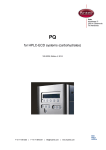
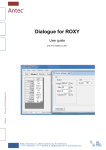
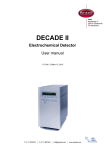

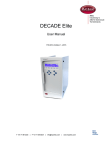
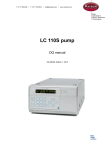
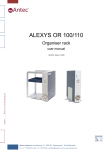

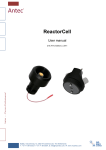
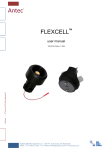

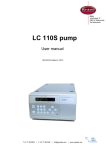
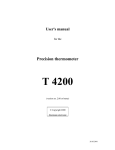



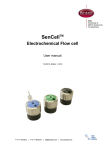
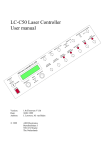

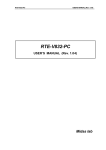
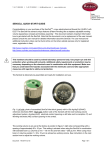
![4403002491_712_716 menu_EN_A [s]](http://vs1.manualzilla.com/store/data/005650300_1-96030b29e24dd373b0bced3bef593dda-150x150.png)